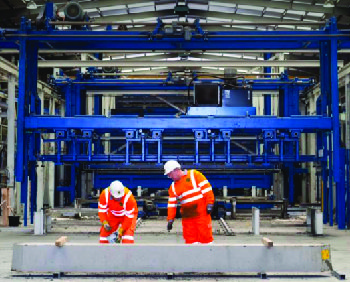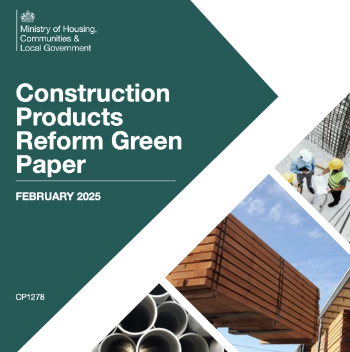The problems with retention
Retention is a percentage (often 5%) of the amount certified as due to the contractor on an interim certificate, that is retained by the client. Half of the amount retained is released on certification of practical completion and the remainder is released upon certification of making good defects.
The purpose of retention is to ensure that the contractor properly completes the activities required of them under the contract.
Retention may als be held by the main contractor on subcontracts, and so on down the supply chain.
In January 2018, following the collapse of Carillion, several main contractors backed a call to put an end to retention payments. Build UK, the Civil Engineering Contractors Association and the Construction Products Association provided a joint submission to the ongoing government consultation, stating that; 'The industry is fully committed to achieving zero cash retention and we believe that Government must introduce legislation to ensure there is zero cash retention within the industry by no later than 2025.'
The construction supply chain payment charter also proposed abolishing retention by 2025.
So what are the problems with retention?
Retentions can be large amounts of money and may cause cash flow problems for parties throughout the supply chain. It has even been suggested that retention clauses do not comply with the Housing Grants, Construction and Regeneration Act (Construction Act), which sets out requirements for the withholding of payments.
Before the amendments were introduced in the 2011 version of the Construction Act, a problem that was particularly prevalent for subcontractors was that the release of the retention monies could be delayed by an act or event that occurred within a different contract, for example, the main contract as opposed to the subcontract. The Act changed this so that the release of retention to subcontractors could not be linked to an occurrence within a main contract that was unrelated. It held that a specific occurrence related to the subcontract is what must trigger the non-release of the monies.
Despite this, some contractors have tried to exploit loopholes to continue delaying retention payments. Contractors have been known to hold onto the retention money for so long that the subcontractor decides to write it off completely and move on to current work. There have even been reports of contractors who have adopted this as their standard operating procedure and consider retention as contributing to their profit margin.
This can be very problematic for subcontractors’ cash flow, especially when a contractors have been reported to retain up to around 2.5% of their turnover for a year or more after a project is complete. It can also create administrative problems for subcontractors in terms of having to maintain records of monies still outstanding and chasing up payment release over a long period of time.
While there are appropriate legal remedies available for such circumstances, they may be judged as being too unwieldy for the sums that are sometimes involved, as well as being time consuming, leading to a break down in relationships which may affect possible future work.
In addition, the risk of non-payment due to contractor insolvency also increases the longer payment is delayed. Retention monies that are held when a contractor fails often end up going to creditors instead of subcontractors, even though the failure is often unrelated to the subcontractor.
Retention can also pose problems for main contractors. For example, when trying to recover retention monies from the client, perhaps in a situation where the client has incorrectly identified something as a defect.
For updates on retention reform, and potential alternatives, see here.
[edit] Find out more
[edit] Related articles on Designing Buildings Wiki
Featured articles and news
Deputy editor of AT, Tim Fraser, discusses the newly formed society with its current chair, Chris Halligan MCIAT.
Barratt Lo-E passivhaus standard homes planned enmasse
With an initial 728 Lo-E homes across two sites and many more planned for the future.
Government urged to uphold Warm Homes commitment
ECA and industry bodies write to Government concerning its 13.2 billion Warm Homes manifesto commitment.
Places of Worship in Britain and Ireland, 1929-1990. Book review.
The emancipation of women in art.
CIOB Construction Manager of the Year 2025
Just one of the winners at the CIOB Awards 2025.
Call for independent National Grenfell oversight mechanism
MHCLG share findings of Building Safety Inquiry in letter to Secretary of State and Minister for Building Safety.
The Architectural Technology Awards
AT Awards now open for this the sixth decade of CIAT.
50th Golden anniversary ECA Edmundson awards
Deadline for submissions Friday 30 May 2025.
The benefits of precast, off-site foundation systems
Top ten benefits of this notable innovation.
Encouraging individuals to take action saving water at home, work, and in their communities.
Takes a community to support mental health and wellbeing
The why of becoming a Mental Health Instructor explained.
Mental health awareness week 13-18 May
The theme is communities, they can provide a sense of belonging, safety, support in hard times, and a sense purpose.
Mental health support on the rise but workers still struggling
CIOB Understanding Mental Health in the Built Environment 2025 shows.
Design and construction material libraries
Material, sample, product or detail libraries a key component of any architectural design practice.
Construction Products Reform Green Paper and Consultation
Still time to respond as consultation closes on 21 May 2025.
Resilient façade systems for smog reduction in Shanghai
A technical approach using computer simulation and analysis of solar radiation, wind patterns, and ventilation.























